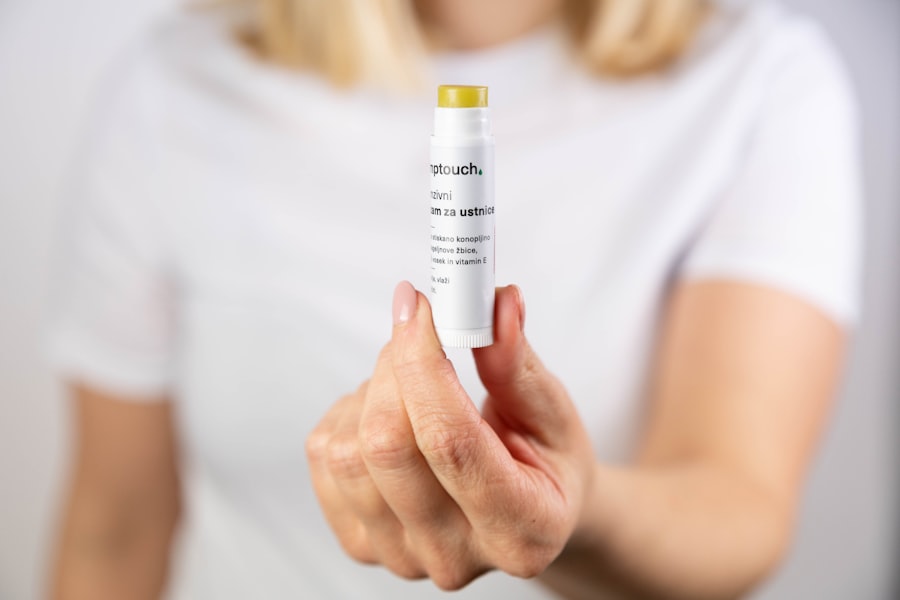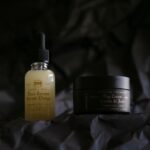Laser hair removal is a popular cosmetic procedure that utilizes concentrated beams of light to target and eliminate unwanted hair.
This process effectively damages the follicles, inhibiting future hair growth.
As you consider this option, it’s essential to understand how it works and what to expect during the treatment. The procedure typically involves a series of sessions, as hair grows in different cycles. You may notice that some hairs are more resistant to treatment than others, which is why multiple sessions are often necessary for optimal results.
Each session can last anywhere from a few minutes to over an hour, depending on the size of the area being treated. While many people experience a significant reduction in hair growth after just a few treatments, complete hair removal may take several months. Understanding these basics will help you set realistic expectations and prepare for your journey toward smoother skin.
Key Takeaways
- Laser hair removal uses concentrated light to target and destroy hair follicles, leading to permanent hair reduction.
- Before getting laser hair removal, it’s important to avoid sun exposure and certain skincare treatments to minimize the risk of complications.
- After laser hair removal, it’s crucial to protect your skin from sun exposure and follow a gentle skincare routine to prevent irritation and complications.
- Potential side effects of laser hair removal include redness, swelling, and changes in skin pigmentation, but these can be managed with proper care and attention.
- Choosing the right skincare products and maintaining hydration and moisture are essential for long-term skin health after laser hair removal.
Preparing Your Skin for Laser Hair Removal
Consultation and Assessment
Begin by scheduling a consultation with a qualified practitioner who can assess your skin type and hair color. This assessment will help determine the most effective laser settings tailored to your specific needs.
Pre-Treatment Precautions
In the weeks leading up to your appointment, take necessary precautions to ensure a safe and effective treatment. Avoid sun exposure and tanning beds, as tanned skin can increase the risk of complications during the procedure. Additionally, refrain from waxing or plucking hair in the treatment area for at least four weeks prior to your session.
Optimal Hair Preparation
Instead of waxing or plucking, shaving is usually recommended in the treatment area. This preparation method leaves the hair follicle intact while removing the visible part of the hair above the skin, allowing the laser to effectively target the hair follicles without interference.
Post-Laser Hair Removal Skin Care Routine

After undergoing laser hair removal, your skin may feel sensitive and appear slightly red or swollen. It’s essential to establish a post-treatment skincare routine that promotes healing and minimizes discomfort. Start by gently cleansing the treated area with a mild, fragrance-free cleanser to remove any residual gel or debris.
Avoid using harsh scrubs or exfoliants for at least a week, as your skin will be more vulnerable during this time. Moisturizing is another critical aspect of your post-laser care routine. Applying a soothing lotion or gel can help alleviate any dryness or irritation you may experience.
Look for products containing hyaluronic acid or aloe vera, as these ingredients are known for their calming properties. Additionally, be sure to keep your skin hydrated by drinking plenty of water and avoiding hot showers or baths for a few days following your treatment.
Managing Side Effects and Potential Risks
| Side Effect/Risk | Frequency | Management |
|---|---|---|
| Nausea | Common | Take medication with food |
| Headache | Common | Stay hydrated and rest |
| Allergic Reaction | Rare | Seek immediate medical attention |
| Increased Blood Pressure | Uncommon | Monitor blood pressure regularly |
While laser hair removal is generally considered safe, it’s important to be aware of potential side effects and risks associated with the procedure. Common side effects include temporary redness, swelling, and mild discomfort in the treated area. These symptoms usually subside within a few hours to a couple of days.
However, if you experience severe pain, blistering, or prolonged redness, it’s crucial to contact your practitioner immediately. To minimize risks, ensure that you choose a reputable clinic with experienced professionals who use FDA-approved equipment. Discuss any concerns you may have during your consultation, and don’t hesitate to ask about their safety protocols.
By being informed and proactive about your treatment, you can significantly reduce the likelihood of complications and enjoy a smoother recovery process.
Protecting Your Skin from Sun Exposure
One of the most critical aspects of post-laser care is protecting your skin from sun exposure. After treatment, your skin will be more sensitive to UV rays, making it essential to take precautions to prevent sunburn and pigmentation changes. You should avoid direct sunlight for at least two weeks following your session and wear protective clothing when outdoors.
In addition to avoiding sun exposure, applying a broad-spectrum sunscreen with an SPF of 30 or higher is vital. Look for sunscreens that contain physical blockers like zinc oxide or titanium dioxide, as these are less likely to irritate sensitive skin. Reapply sunscreen every two hours if you’re spending time outside, and consider seeking shade whenever possible.
By prioritizing sun protection, you can help ensure that your skin heals properly and maintains its desired appearance.
Choosing the Right Skincare Products

Gentle Formulations for Sensitive Skin
It’s essential to opt for gentle formulations that are free from fragrances, alcohol, and harsh chemicals that could irritate your sensitive skin. Look for products labeled as hypoallergenic or non-comedogenic to minimize the risk of adverse reactions.
Soothing Ingredients for Calming Inflammation
Incorporating soothing ingredients into your skincare routine can also be beneficial.
Antioxidant-Rich Products for Enhanced Recovery
Additionally, consider using serums or moisturizers rich in antioxidants to support your skin’s recovery process. By choosing the right products, you can enhance your post-treatment experience and maintain healthy skin.
Maintaining Hydration and Moisture
Keeping your skin hydrated is essential after laser hair removal, as it helps support healing and reduces discomfort. You should aim to drink plenty of water throughout the day to keep your body hydrated from within. Hydration plays a crucial role in maintaining skin elasticity and overall health, so make it a priority during your recovery period.
In addition to internal hydration, applying moisturizers regularly can help lock in moisture and soothe any dryness or irritation you may experience. Look for products that contain humectants like glycerin or hyaluronic acid, which attract moisture to the skin. You might also consider using occlusive agents like shea butter or petroleum jelly to create a barrier that prevents moisture loss.
By focusing on hydration both internally and externally, you can promote optimal healing after your treatment.
Long-Term Skin Care After Laser Hair Removal
Once you’ve completed your laser hair removal sessions and your skin has healed, it’s important to establish a long-term skincare routine that supports healthy skin maintenance. Regular exfoliation can help prevent ingrown hairs and keep your skin smooth; however, be cautious not to over-exfoliate, especially in the weeks following treatment. Aim for gentle exfoliation methods such as chemical exfoliants with alpha-hydroxy acids (AHAs) or beta-hydroxy acids (BHAs) rather than harsh scrubs.
Incorporating regular moisturizing into your daily routine will also help maintain your skin’s softness and elasticity over time. As you continue to care for your skin post-treatment, consider consulting with a dermatologist about incorporating targeted treatments such as serums or professional facials tailored to your specific skin type and concerns. By committing to a consistent skincare regimen, you can enjoy long-lasting results from your laser hair removal experience while keeping your skin healthy and radiant for years to come.
If you’re considering laser hair removal, it’s important to know how to properly care for your skin afterwards. One related article that provides helpful tips is “The Dos and Don’ts of Post-Laser Hair Removal Care”. This article offers additional advice on how to maintain smooth and healthy skin following your laser hair removal treatment. By following these tips, you can ensure that your skin remains in optimal condition and that you get the best results from your treatment.
FAQs
What is laser hair removal?
Laser hair removal is a cosmetic procedure that uses a concentrated beam of light (laser) to remove unwanted hair. The light energy is converted to heat, which damages the hair follicles and inhibits future hair growth.
How does laser hair removal affect the skin?
Laser hair removal can cause temporary redness, swelling, and irritation in the treated area. In some cases, it may also cause changes in skin pigmentation, such as lightening or darkening of the skin.
What are some tips for taking care of the skin after laser hair removal?
Some tips for taking care of the skin after laser hair removal include:
1. Avoid sun exposure and use sunscreen.
2. Keep the treated area clean and moisturized.
3. Avoid hot showers and baths, as well as swimming in chlorinated water.
4. Avoid using harsh skincare products or exfoliating the treated area.
5. Follow any specific aftercare instructions provided by your dermatologist or skincare professional.
How long does it take for the skin to recover after laser hair removal?
The skin may take a few days to a couple of weeks to fully recover after laser hair removal, depending on the individual’s skin type and the intensity of the treatment. It’s important to follow proper aftercare to aid in the skin’s recovery.
Are there any potential risks or side effects of laser hair removal on the skin?
Some potential risks and side effects of laser hair removal on the skin include temporary redness, swelling, and irritation, as well as changes in skin pigmentation. In rare cases, it may also cause blistering, scarring, or infection. It’s important to consult with a qualified dermatologist or skincare professional to minimize these risks.






